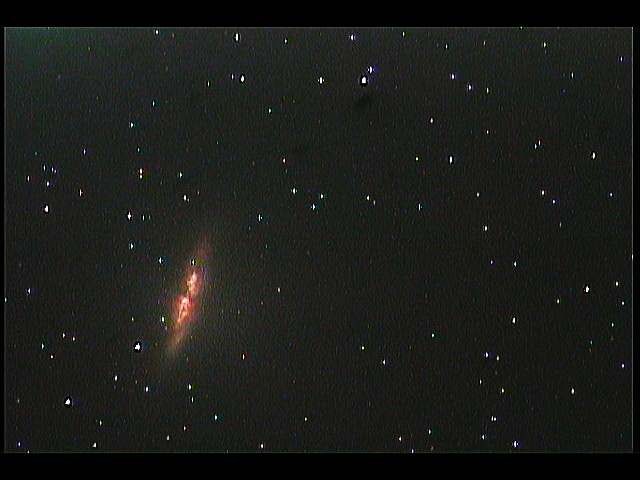
M82 - "The Cigar Galaxy" Not by best effort but this is the shot of M82, tweaked a tad. I’m obviously not perfectly polar aligned as there is a bit of star trailing. Taken Saturday, June 16, 2018 Rodger Forsyth
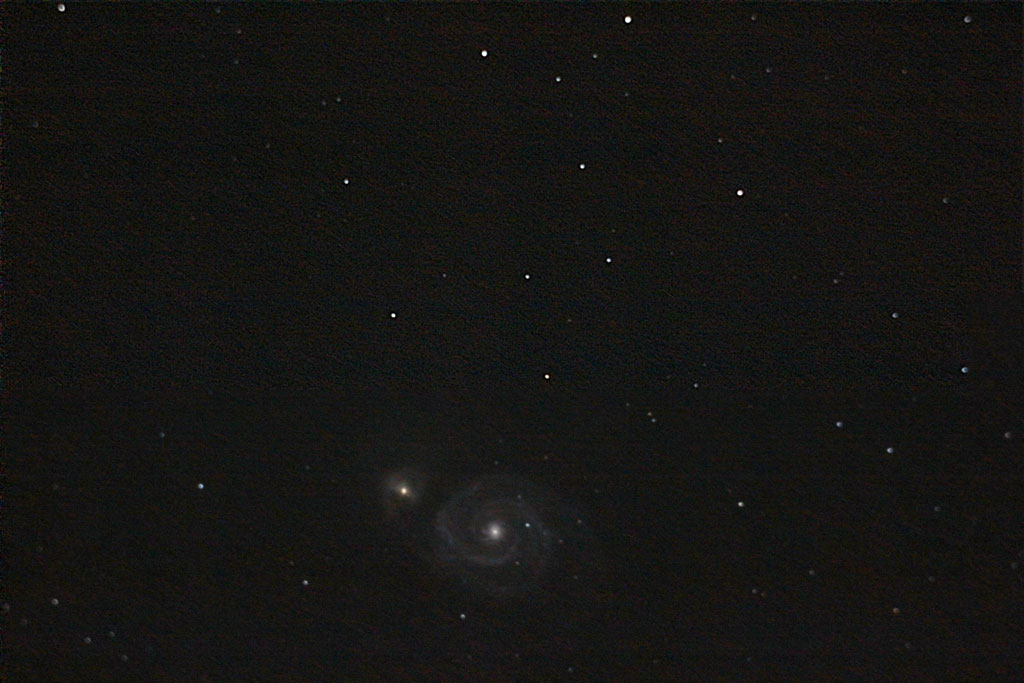
2018-May-26 - D. Shilling - M51 I used a Celestron Advanced AVX ( GEM mount) with a C6 Schmidt-Cassergrain optical tube. It's 6 photos stacked in Registax6 and then processed in Lightroom . Prime focus with a Canon T3i 30 sec images ISO 1600 Polar aligned and then 4 additional stars for calibration. Taken Saturday, May 26, 2018 Dixie Shilling
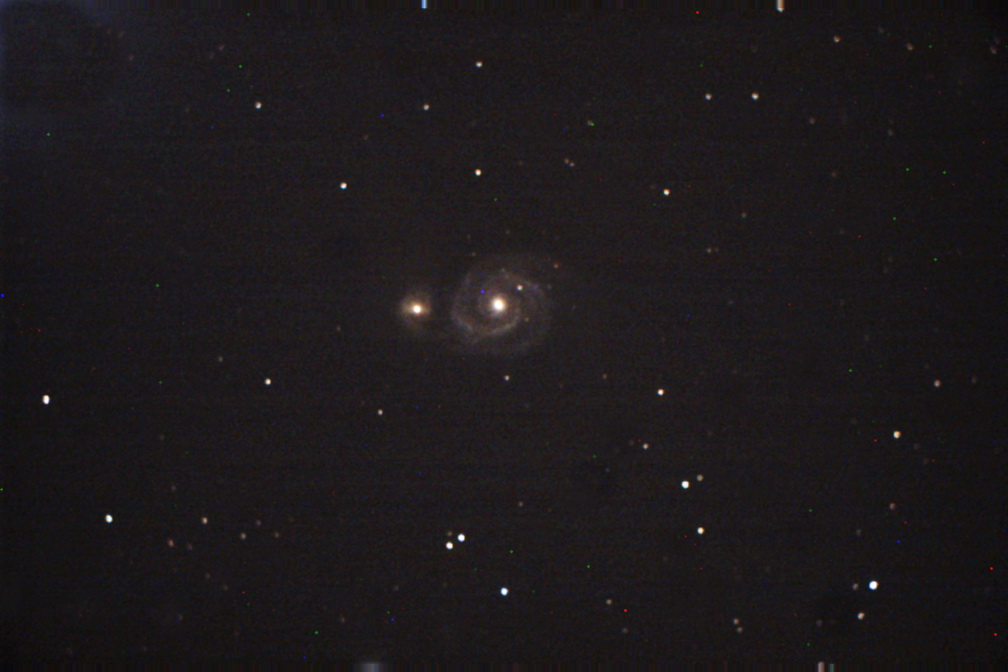
2018-May-8 - R. Forsyth - M51 I thought I would give M51, the Whirpool Galaxy a try. Taken with Mallincam Universe on Vixen VMC200L riding the EQ6 Pro mount. This is a single shot, 1 min. 45 sec. with focal reducer and 3X3 binning. M51 is 23 million light years away. Taken Tuesday, May 8 2018. Rodger Forsyth

Andromeda - Not guided canon T3i 25 sec 3200iso AVX C6 with focal reducer 220 lights 32 dark 32 bias Taken by: Dixie shilling - Aug. 9, 2019
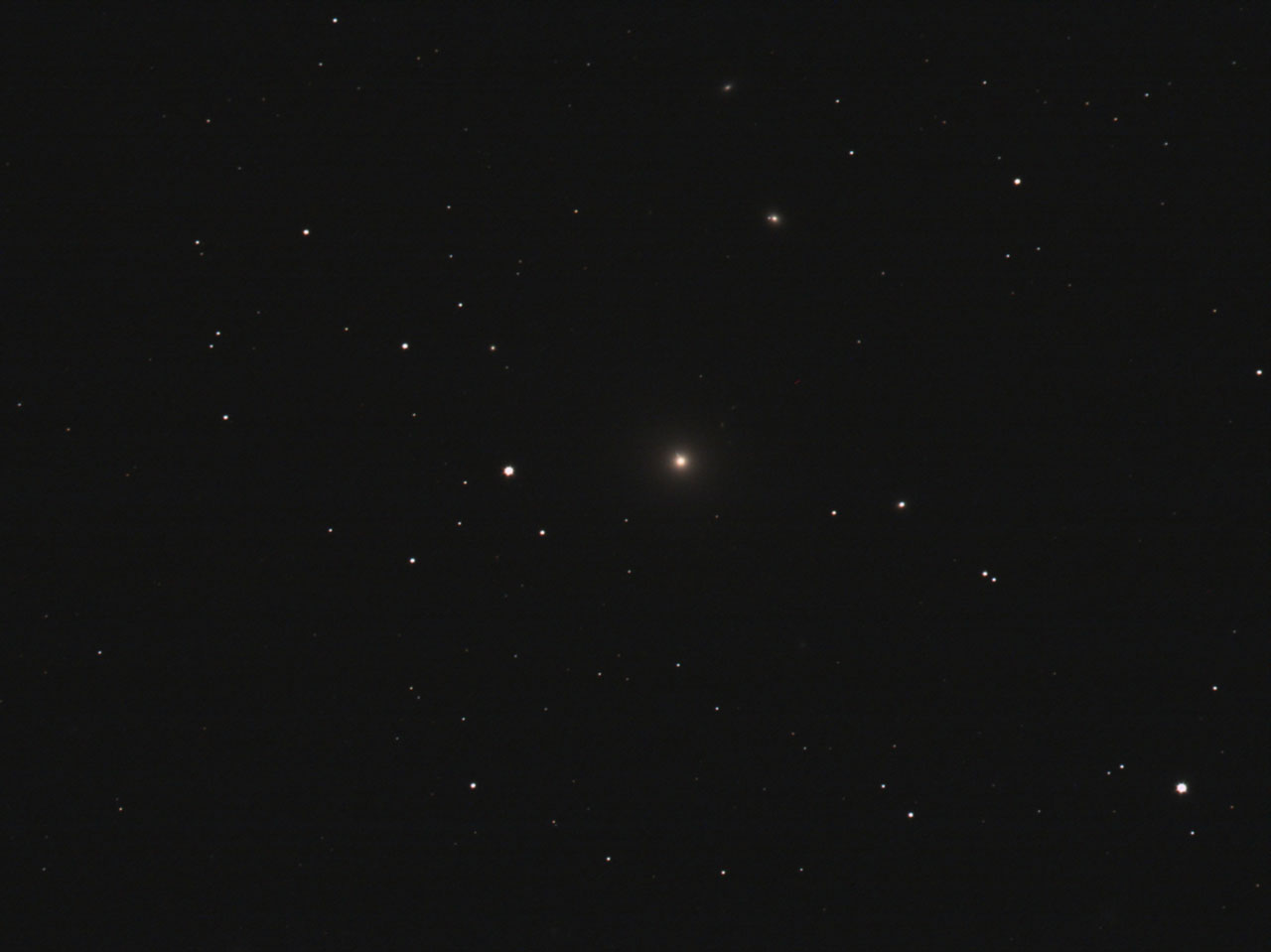
2020-Apr 12 - B. Hardy - M87 Last night I was galaxy hunting in Virgo, Leo and Coma Berenices. My first target was M87 in Virgo. M87 is a giant elliptical galaxy at magnitude 8.67. It is 55 million light years away. You may recall that M87 was very much in the news last year. At the heart of this galaxy is a supermassive black hole 6.5 billion solar masses. It was the first black hole to be imaged. Elliptical galaxies are the most massive galaxy type, but are not very impressive visually compared to spiral and irregular galaxies. Giant elliptical galaxies like M87 can contain as many as a trillion stars and extend one million light years across. By comparison, our Milky Way galaxy (one of the larger galaxies) has about 300 billion stars and is about 150,000 light years in extent. My goal last night was to try to capture the superluminal jet emanating from the black hole at M87's core. I was able to capture this giant jet using a MallinCam Sky Raider DS10C TEC camera attached to my 175 mm TMB refractor at f/8. This image is a stack of 30, 6 second images. No post processing of any kind was applied. This is a screen capture from the software controlling the camera. Zoom in to get the best view of the jet. This jet extends at least 5,000 light years into space, although my image shows only a small portion of it. Heber D. Curtis discovered the jet in 1918 from the Lick Observatory. The jet is composed of gas ejected from the black hole. Taken by : Brett Hardy Date : 2020-Apr 12
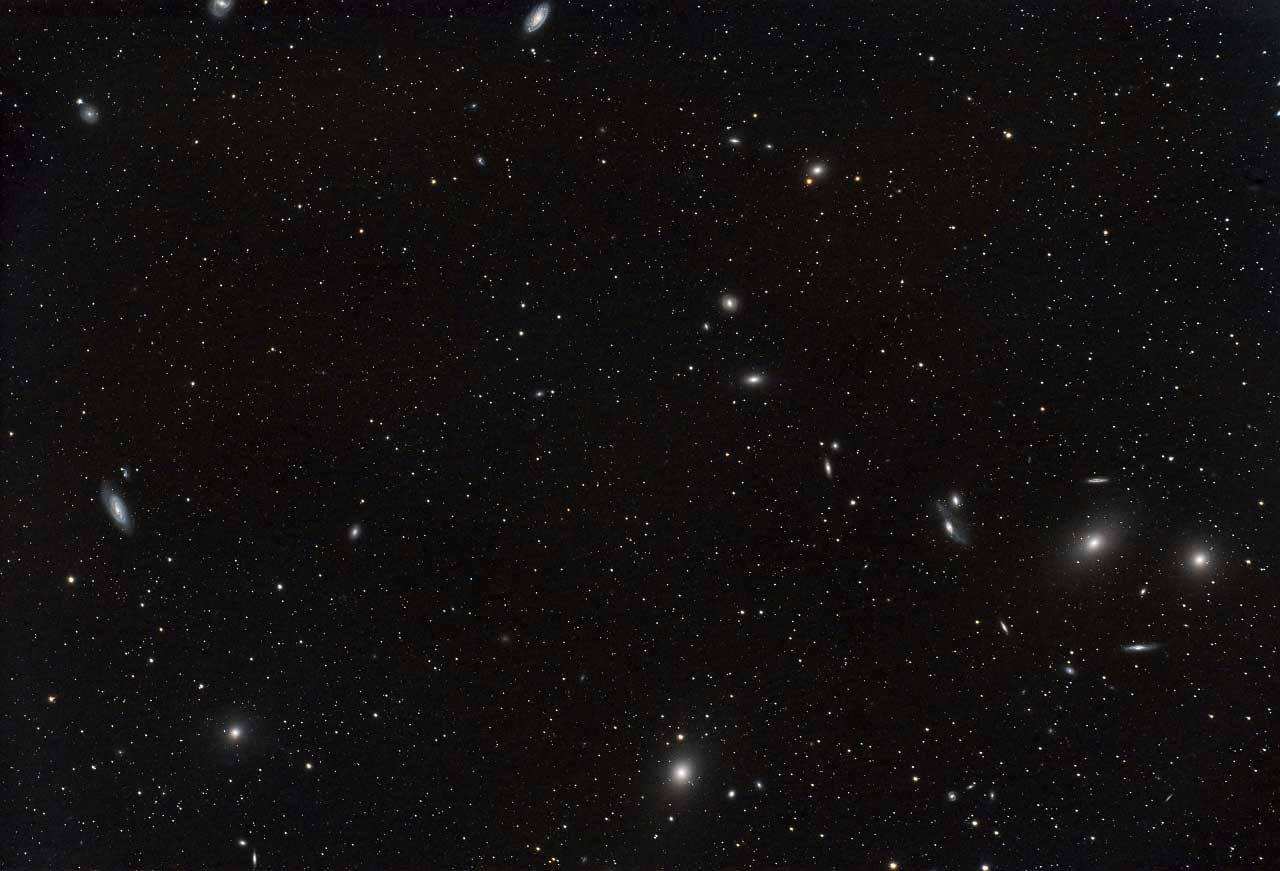
Markarian's Chain Telescope: astro-tech 80edt Camera: nikon d5300 full-spectrum Filter: idas lps d1 48mm Mount: celestron avx 5 min x 49 (total 4 hr 5 min) Processed in Pixinsight Taken by : James Lee
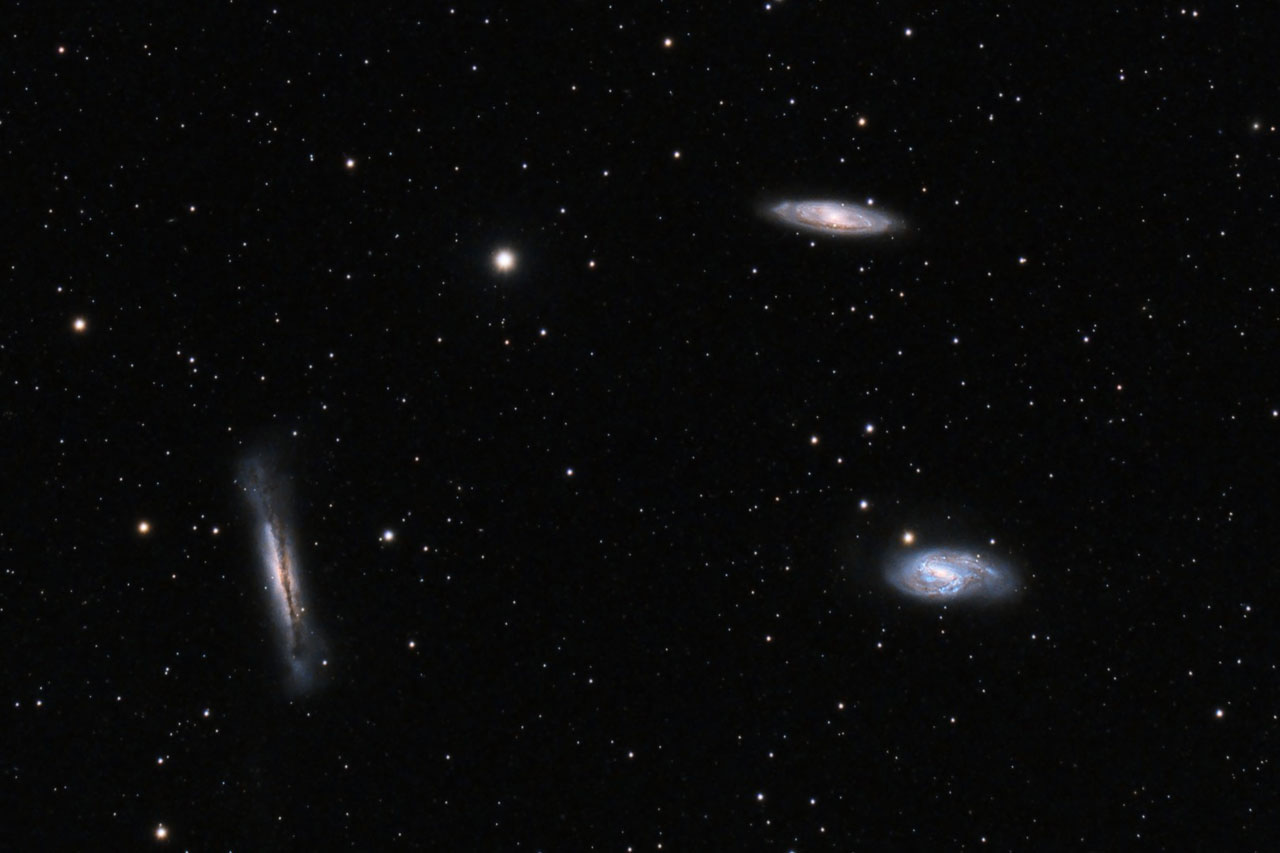
Leo Triplet It was a bit of a challenge with a small telescope Scope : Astro-tech at80edt Camera : Nikon d5300 full-spectrum Mount : Celestron avx Process: 51 x 3 min subs Processed in pixinsight Taken by : James Lee
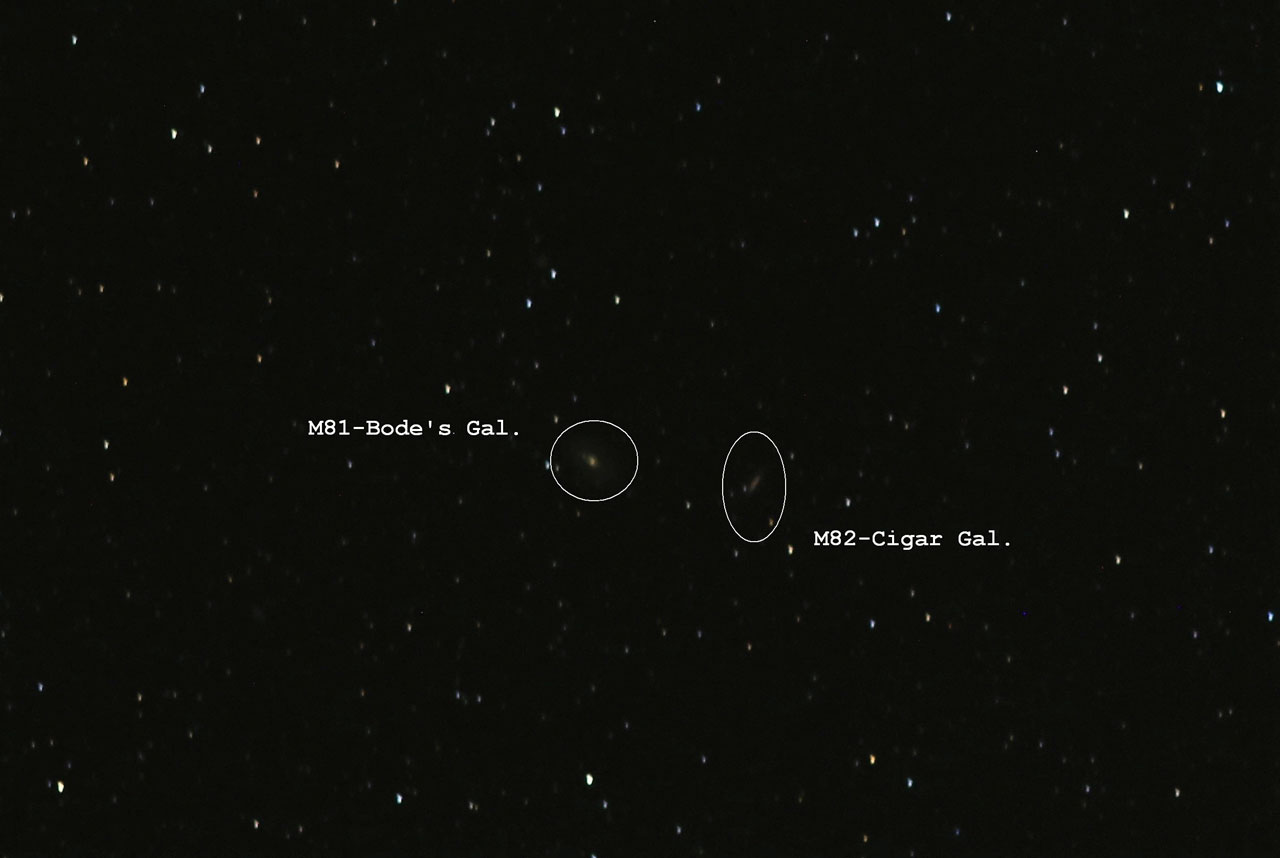
2020-Mar 27 - R. Stankiewicz - Galaxies M81 and M82 I was telling Sean today that the other night (while comet hunting) I took pictures of Messier objects I could see and a few I couldn’t. The fact is, I grabbed images of 11 Messier Objects in the short time I was out (1 hour). That’s 10% of all the Messiers! The only two I couldn’t see are the two I am attaching here, as the Andromeda Galaxy (M31) is the only naked eye galaxy (in the northern hemisphere). The reason these two galaxies attached here are significant (M81 & 82) is because they were close in magnitude to the comet I was hunting this particular night (T2 Panstarrs) See image above. These galaxies are mag. 7.8 & 8.8 respectively. The comet was about 8.5 mag. Comparing these three objects you can sure see why Messier was interested in hunting them down and making his list. They all look like comets to me at this magnification! Taken by : Rick Stankiewicz Date : 2020-Mar 27
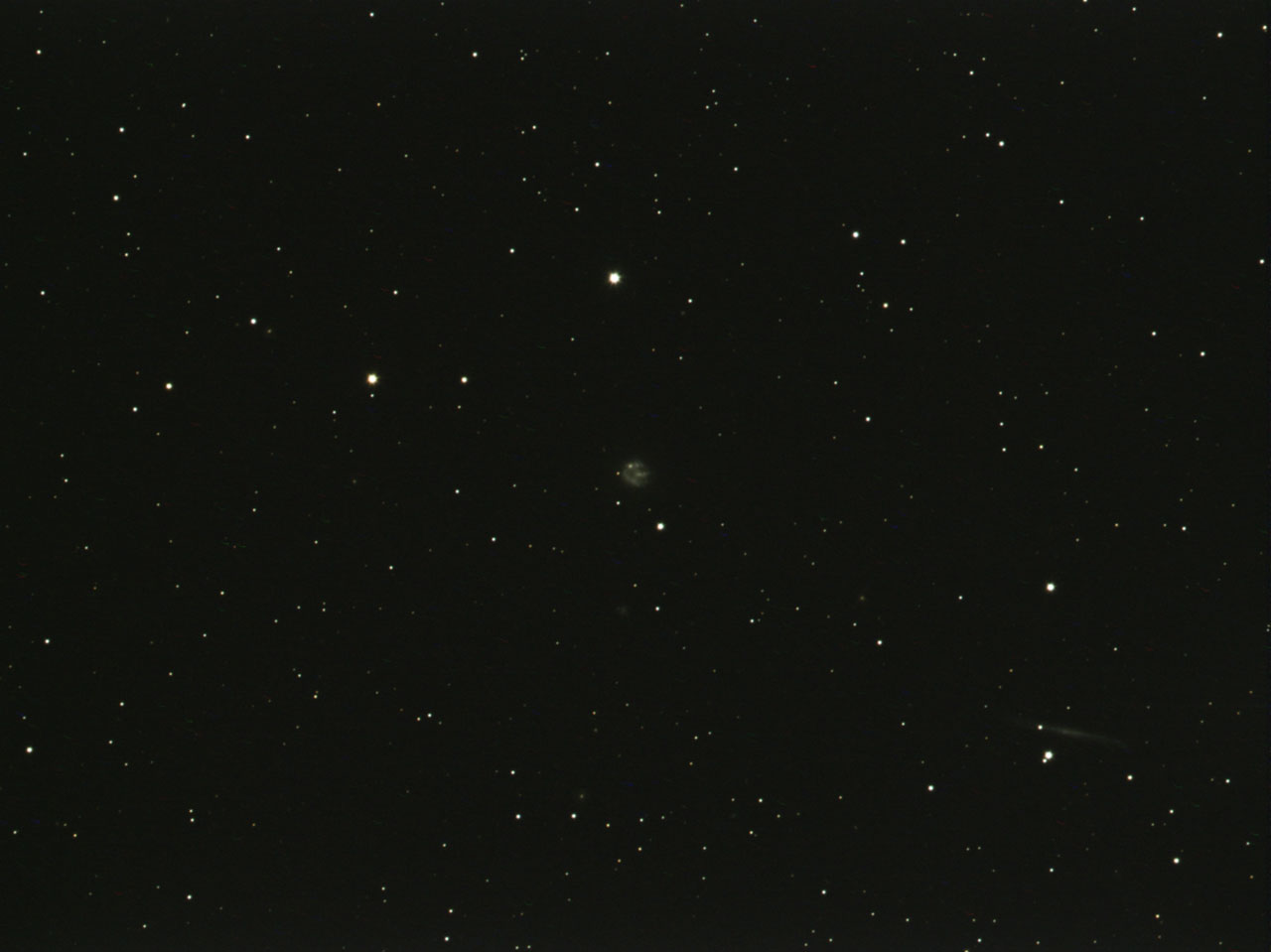
2020-Mar-15 - B. Hardy - Bear Paw Galaxy NGC2537 This image is NGC 2537 known as the Bear Paw Galaxy due to its peculiar form. It is a face-on barred spiral galaxy in Lynx. It is magnitude + 12.3 and 22 million light years distant. Its appearance is rather striking. Zoom in to see why it is called the Bear Paw Galaxy. The star forming regions give the appearance of a bear's paw. Look closely and you will see a large number of other galaxies, looking like faint grey smudges or out of focused stars. The most obvious in IC 2233 to the lower right. This is another barred spiral galaxy, but with an edge-on orientation. It is magnitude + 12.63 and 40 million light years away. The image was also captured with a MallinCam DS10C TEC camera. It is a stack of 30 images (10 @ 5 seconds, 10 @ 9 seconds and 10 @ 15 seconds) all done within the capture software. No post processing or filters were used. Taken by : Brett Hardy
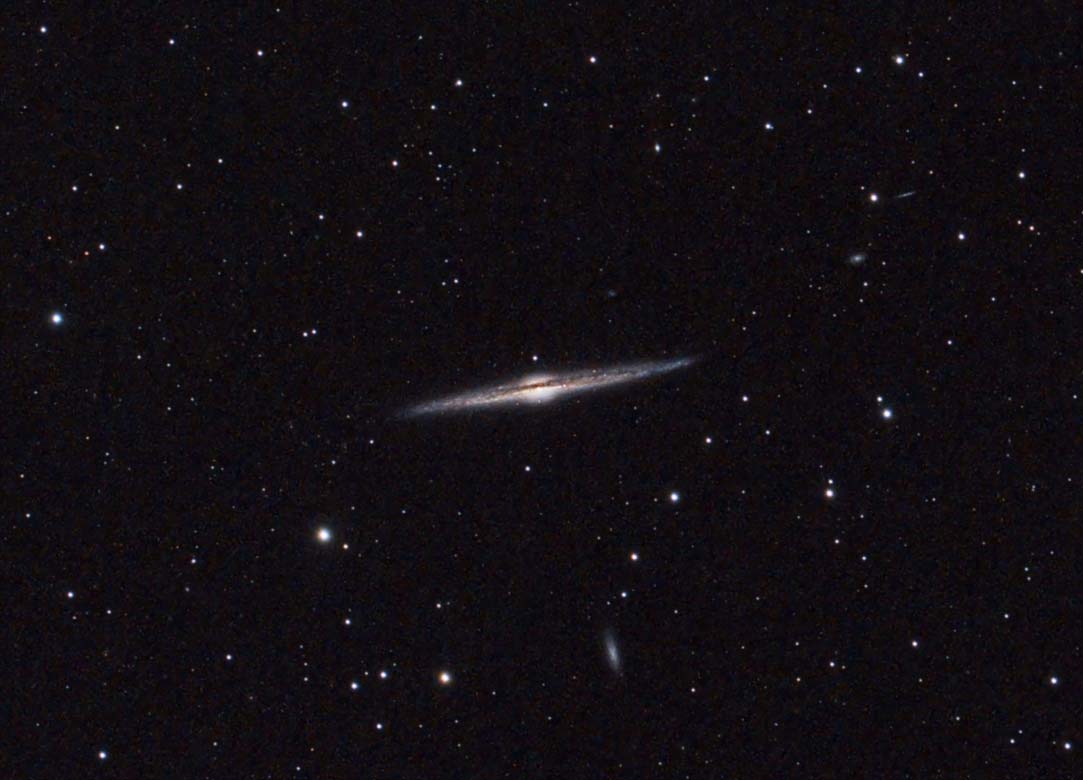
2020-Mar. 27 - James Lee - NGC 4565 I would like to share the needle galaxy(NGC 4565) I took last night.
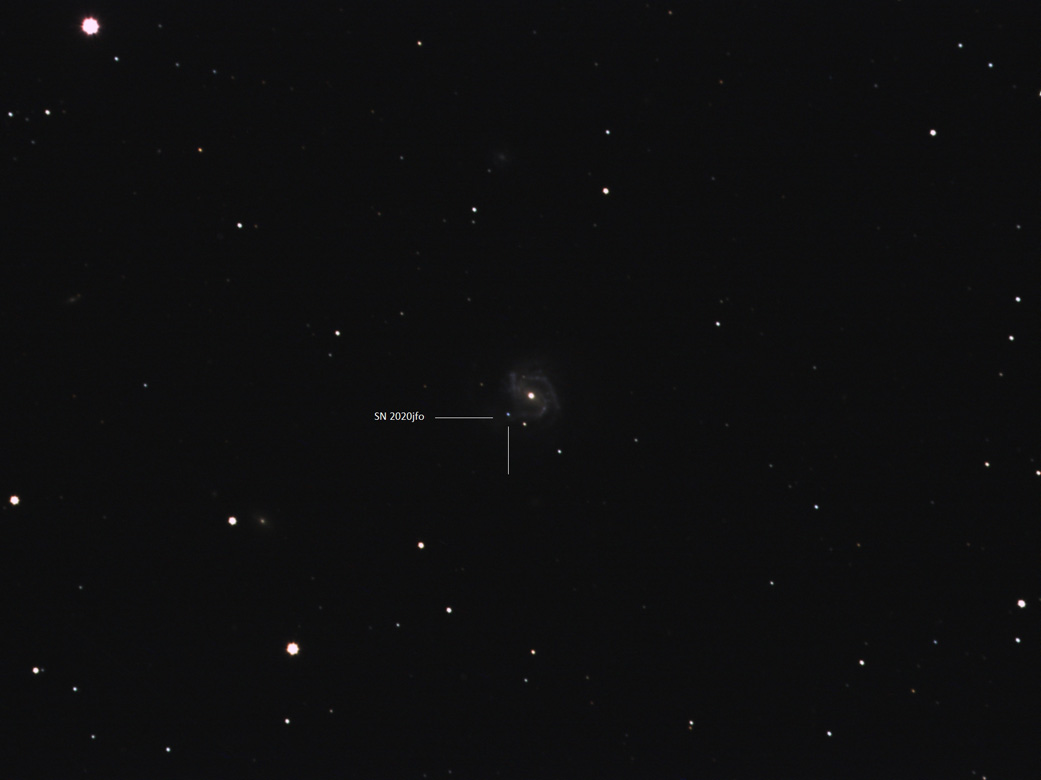
2020-May 12 - B. Hardy - SN 2020jfo - Type II Supernova in M61 SN 2020jfo is a Type II supernova in M61. It was first detected May 6th. We took a look at it last night during the Zoom broadcast. M61 is 40 million light years from Earth and the supernova is currently around magnitude 14.2. Just think, this star exploded 40 million years ago and this light is just now reaching Earth, amazing! The supernova is too dim to see in binoculars or in a telescope without camera aid. In a very large amateur telescope it may just be at the limit of visual detection. With a camera at 12 seconds it is obvious. I have attached a snap from last night. Taken by : Brett Hardy Date : May 12, 2020
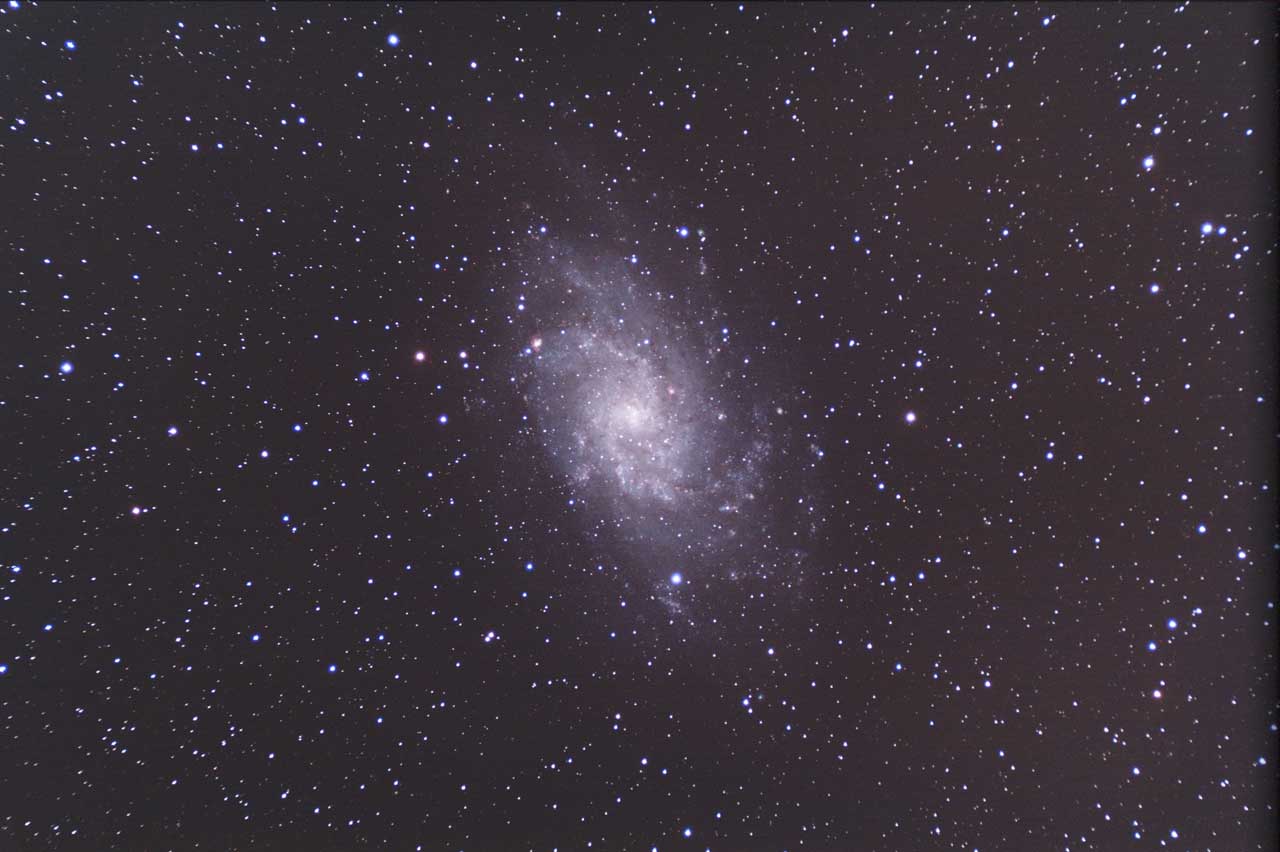
2020-November 14 - Brian Colville - M33 I have been trying to get back at deep sky imaging after too long a break, and after a few trial runs earlier in week, I set the scope and camera on M33 and captured the attached image. Details as follows: Scope: Stellarvue 110mm, f7 with a 0.8x tele-compressor/flattener, so the final optical system would be around 615mm at f5.6 Mount: Takahashi EM400, driven but no autoguiding Camera: Canon 60D with Ha modification Exposure Length/Number: 30 exposures, 125 second each Image Processing: Dark frame and flat field corrections, stacking, and digital development applied in Images Plus. Final tweaking in Photoshop. I was glad to see the Ha regions come out in the image and overall vey happy with the result after what has been a multi-year break form any serious deep sky work (besides wide field camera lens work).
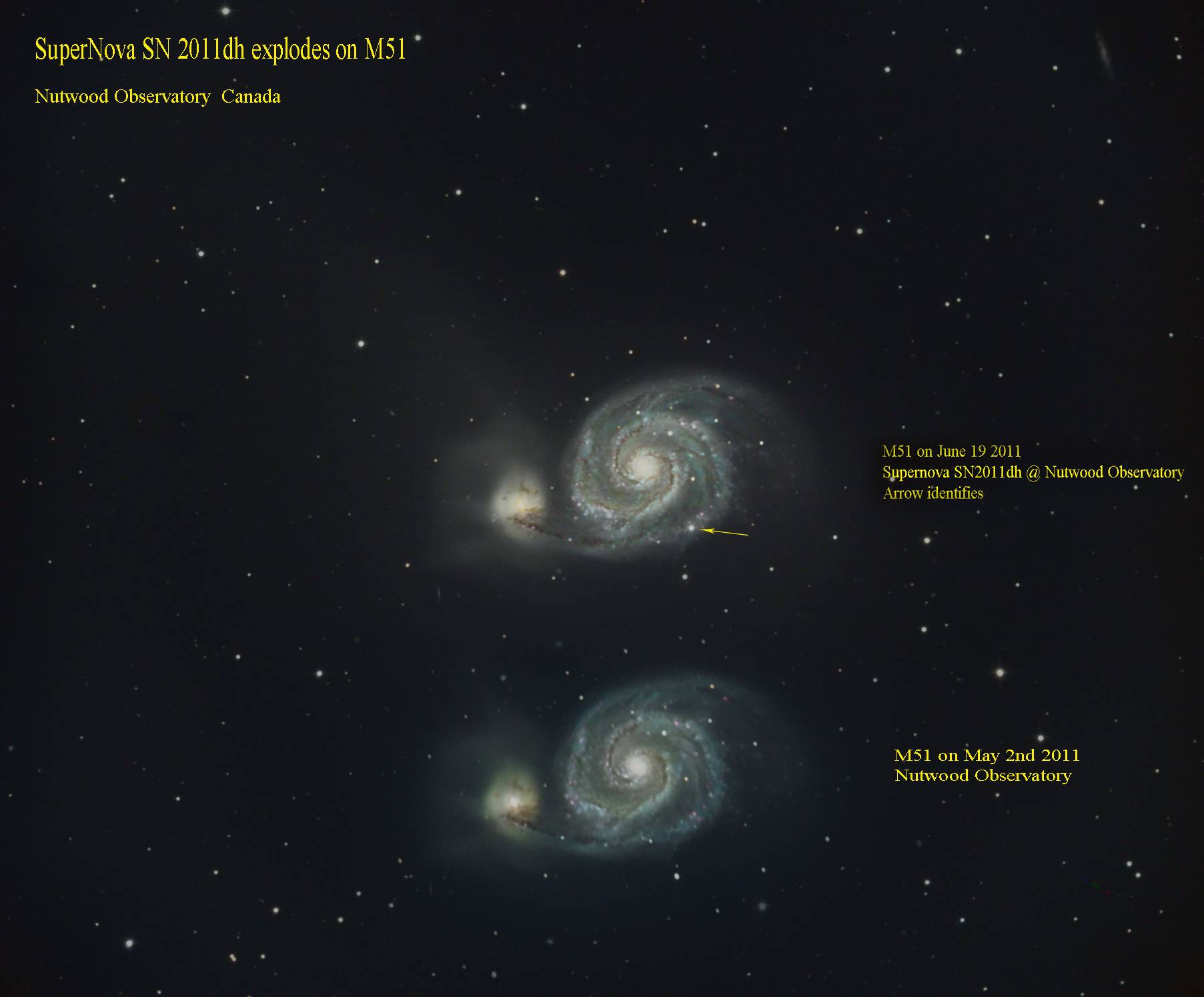
Super Nova (SN 2011dh) approx 6 hrs LRGB 8 hrs digital processing June 19th 2011 Brian McGaffney Occurence on M51 shown here in detail taken at the Nutwood Observatory. Compared this to the image of M51 taken only a month before. This Super Nova was of a yellow supergiant star, at 14 magnitude, 14-18 times our solar mass. M51 is about 25 million light years from our galaxy.
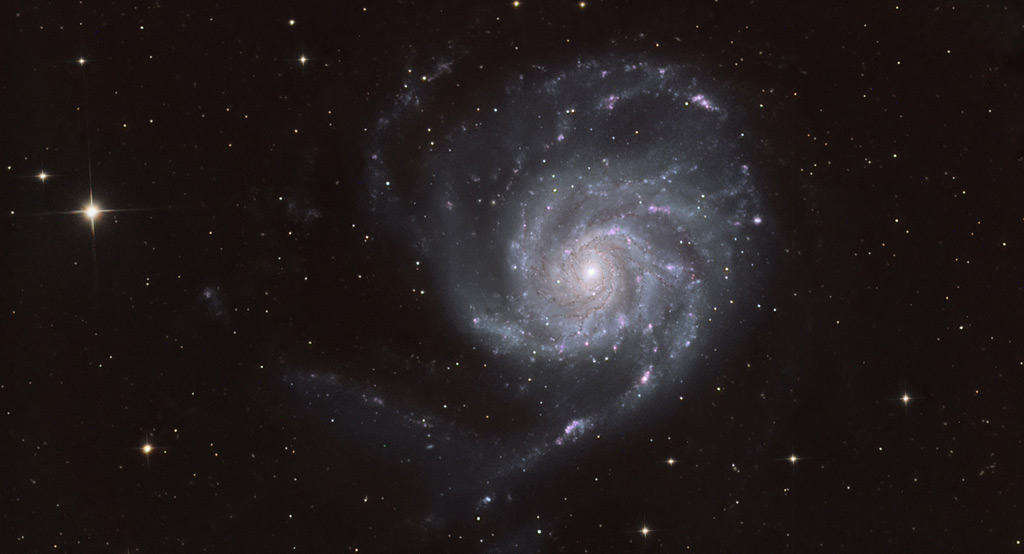
Pinwheel Galaxy M101 or NGC 5457 located in the constellation Ursa Major (The Big Dipper). M101 is slightly larger than our galaxy with a size of about 170 thousand light years across. It is about 25 million light years away from us. It shines at about magnitude 9.0 and is visible with a good telescope. However to observe the detailed arm structures seen in my image, one requires a very large telescope. I was using a 17 inch Truss scope for this image. As you can see by the image, M101 is an asymmetrical galaxy. Its spiral arms being forcefully bothered by adjacent neighbouring satellite galaxies. The soft pink hues situated in the arms of the spirals, are hot star forming regions and are rich in H II emissions. These regions were imaged here with the aid of other narrow band techniques. Imaged by Brian McGaffney
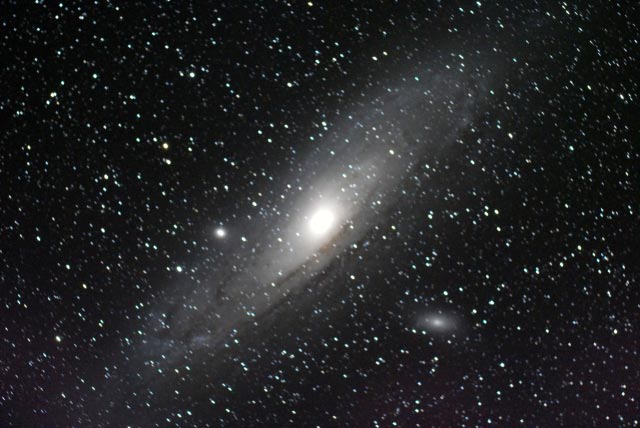
M31 Standard Nikon D80 DSLR William Optics M110, 690mm focal length, f6.0 0.8 factor field flattener to yield an effective 552mm @ f4.8 Skywatcher EQ6 Pro German Equatorial with drive, polar aligned for photo None 498 seconds (8.3 minutes) 1 Contrast enhanced with Photoshop Elements Taken by: Harold Briggs August 31, 2008

Andromeda Galaxy with M32 and M101 Galaxy Equipment: Astro-Tech at80edt (80mm triplet refractor) Astro-Tech x0.8 flattener/reducer Celestron AVX Nikon d5300 full-spectrum SVBONY 60mm guide scope QHY5-ii-m guide camera IDAS lps d1 48mm (light pollution filter for RGB) Baader 2" 7nm Ha filter Baader 2" 8.5nm Oiii filter Acquisition: Used AstroPhotography Tool to capture ISO 200, focal length 384mm, f/4.8 7 min x 23 (2 hr 41 min) Processing: Mostly used Pixinsight, rarely used Photoshop Taken By : James Lee - Sep 2, 2019
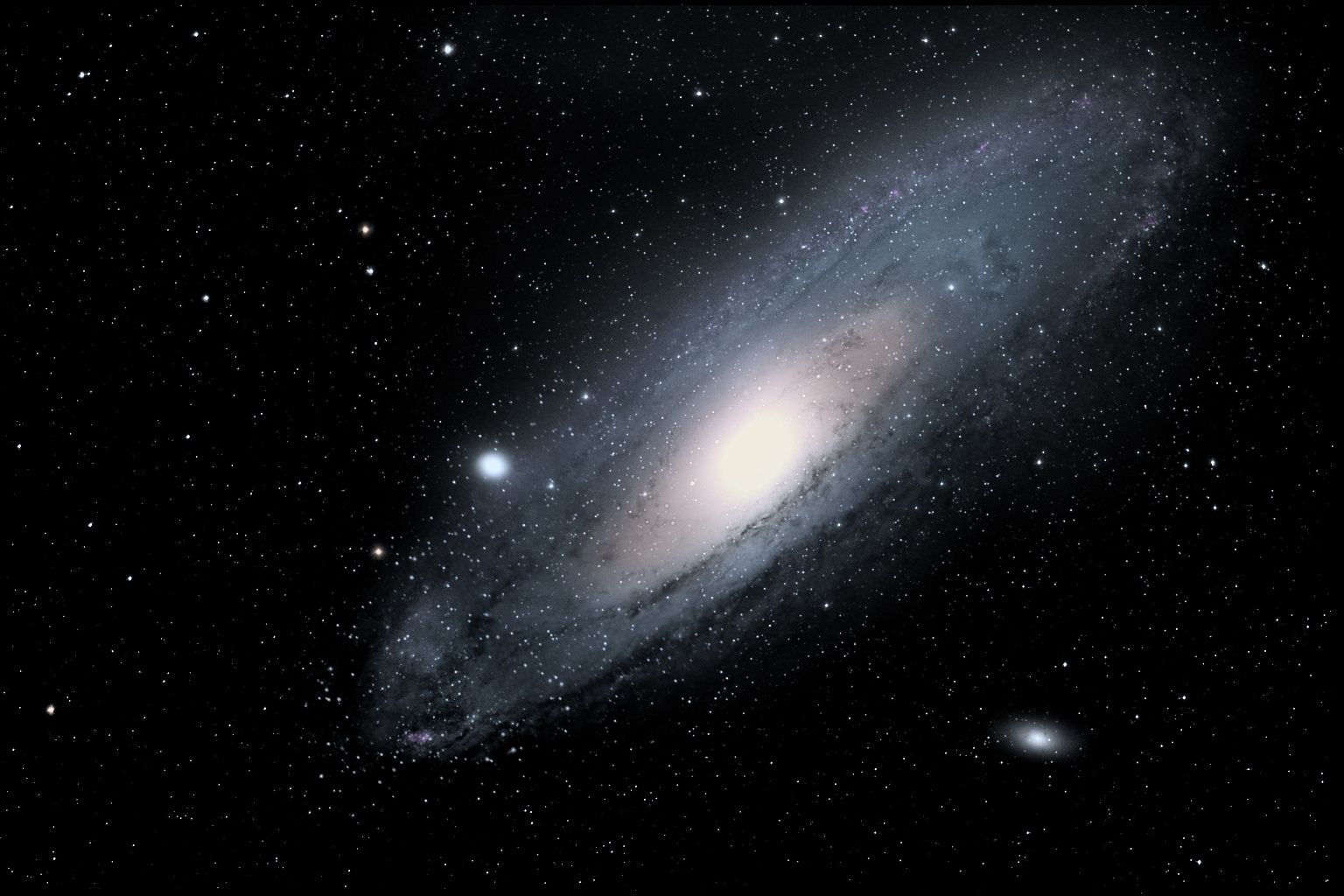
M31 taken over two nights at the Nutwood Observatory on Sept 5th and 6th, 2012. Data, LRGB+Ha 12 hrs total. Using a W.O. 132 with SBIG 6303e with Astrodon filters. Plus 20 hrs of digital development. Piggy backed on an ME. M31 plus M32 and M110 in the background.
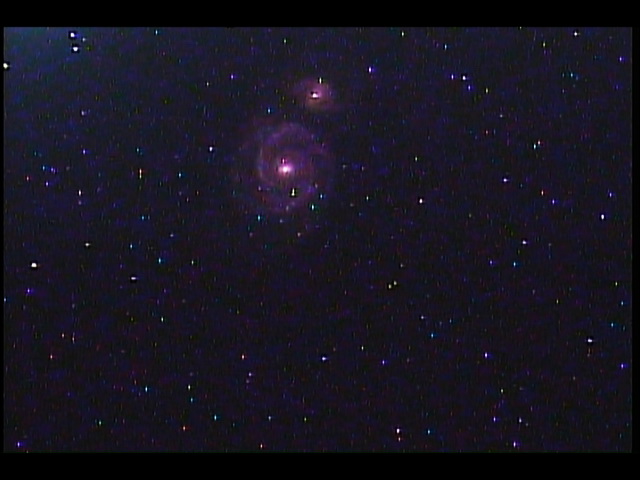
M51 – the whirlpool galaxy 23 million light years away Shot with Mallincam Jr. Pro with MFR-5 focal reducer on a Mallincam VRC-6 6” RC optical tube mounted on the EQ6 Pro mount. M51 was a 30 second integration. Short videos were captured then image created using RegiStax 6. Taken by Rodger Forsyth

M81 20 inch Truss Scope ME 10 hrs. 20 hrs March 2011 Brian McGaffney Taken at the Nutwood Observatory March 2011. Part of the pair M81 and M82. Perhaps the most perfect Spiral Galaxy in the night sky, thanks to close encounters with its neighbour M82 some 600 million years ago. It is a bright galaxy with magnitude of about 6.2.

I was out looking and working on M82 for a few nights (in the remote observatory. Any way, here is mine taken form the dome with a 14 inch astro graph using and apogee 4096x4096. This is an HALRGB image taken basically Jan 29th to Jan 30th. Brian McGaffney
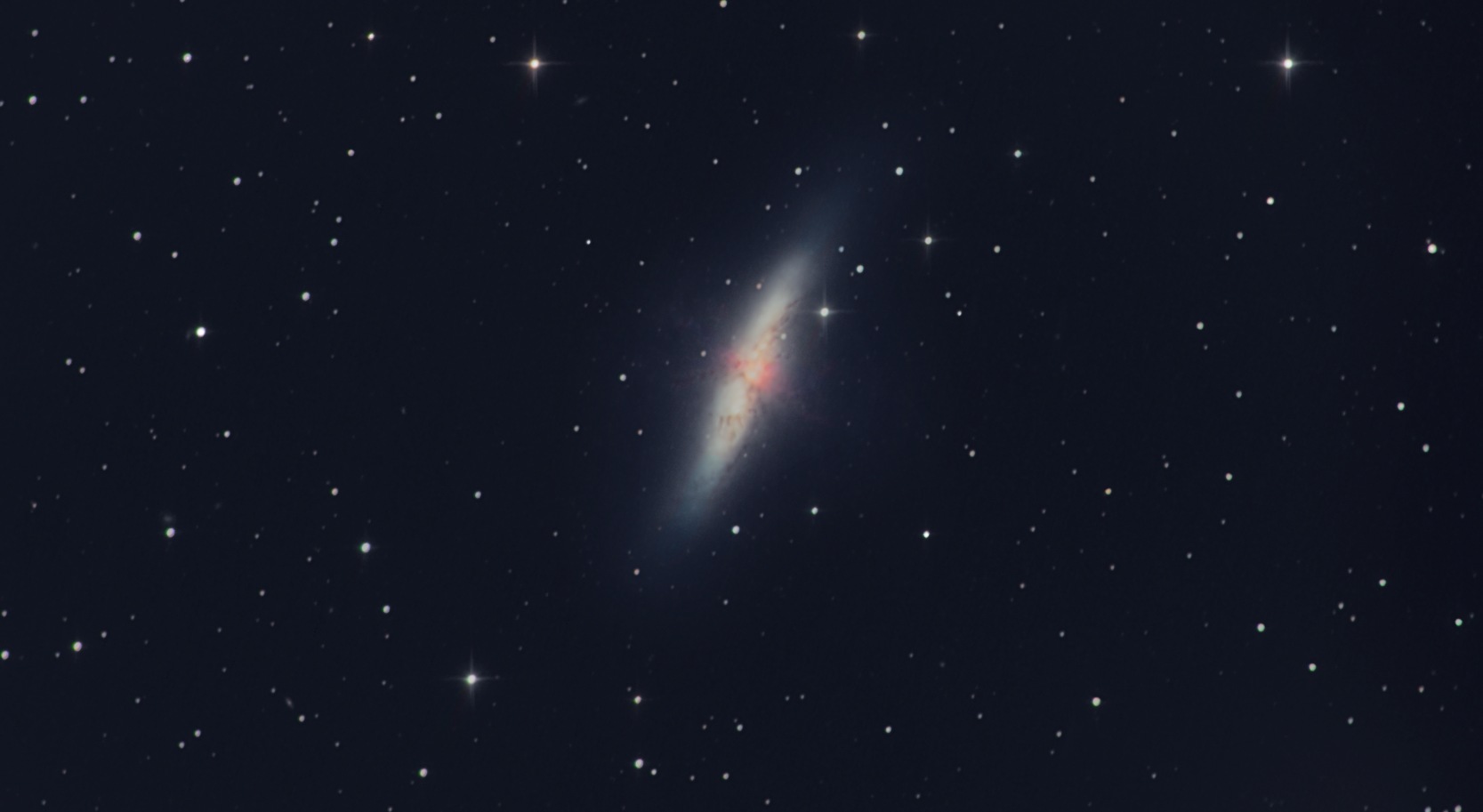
M82 (Cigar Galaxy). Hi Res close-up (24 meg) CCD image LLRGB (6,3,2,2) hrs. Taken at Nutwood Observatory April 2011. f9 Ceravolo, ME mount, guided subs 20 min Messier 82 (M82, NGC 3034) is a remarkable galaxy of peculiar type in constellation Ursa Major. It is usually classified as irregular, though probably a distorted disk galaxy, and famous for its heavy star-forming activity, thus a prototype member of the class of starbursting galaxies. Forming a most conspicuous physical pair with its neighbor, M81 (THE showpiece galaxies for many Northern hemispherers), this galaxy is the prototype of an irregular of the second type, i.e. a "disk" irregular. Its core seems to have suffered dramatically from a semi-recent close encounter with M81, being in a heavy starburst and displaying conspicuous dark lanes. This turbulent explosive gas flow is also a strong source of radio noise, discovered by Henbury Brown in 1953. The radio source was first called Ursa Major A (strongest radio source in UMa) and cataloged as 3C 231 in the Third Cambridge Catalogue of Radio Sources. In the infrared light, M82 is the brightest galaxy in the sky; it exhibits a so-called infrared excess (it is much brighter at infrared wavelengths than in the visible part of the spectrum). This behaviour can also be observed for the companion of M51, NGC 5195, and the peculiar galaxy NGC 5128 (Centaurus A). The visual appearance is that of a silvery sliver, as John Mallas decribed it. Recently, over 100 freshly-formed (young) globular clusters have been discovered with the Hubble Space Telescope. Their formation is probably another effect triggered by the encounter with M81. It was estimated that the most recent tidal encounter occurred between about 50 and several 100 million years ago: STScI's most recent number was 600 million years, when the 100-million-year-long period of heavier interaction began. As a member of the M81 group, M82 is 12 million light years distant Brian McGaffney
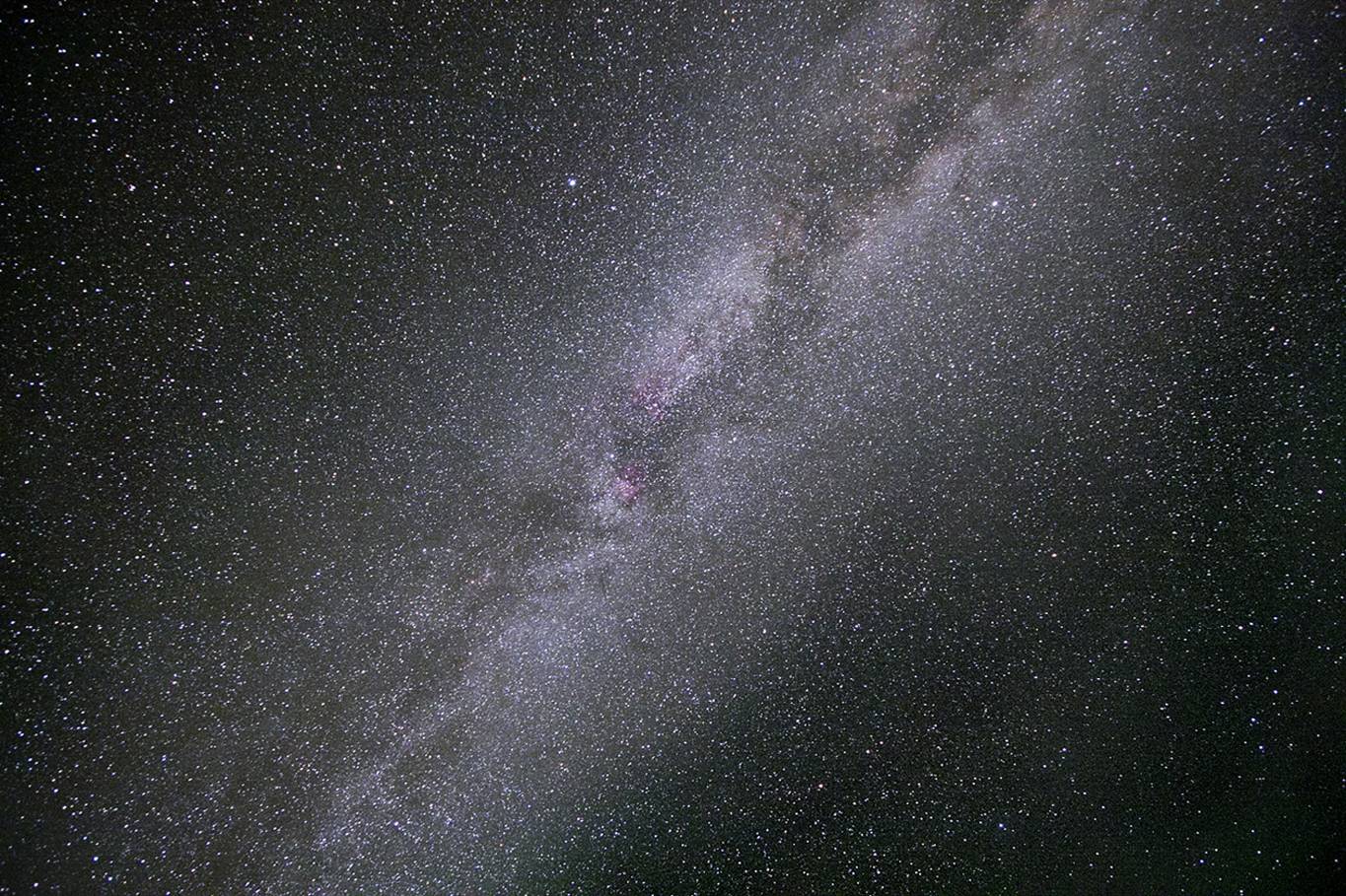
Milky Way DSLR Canon 40d. Each image was acquired thru an 18mm lens at 4.0 ISO 1600. The mount used was an EQpro 6 on a pier tech 2 pier. Each image was 2 minutes guided, a seperate set of 5 images were taken ,then stiched to-gether. Brian McGaffney

Our home in space - Milky Way. Brian McGaffney
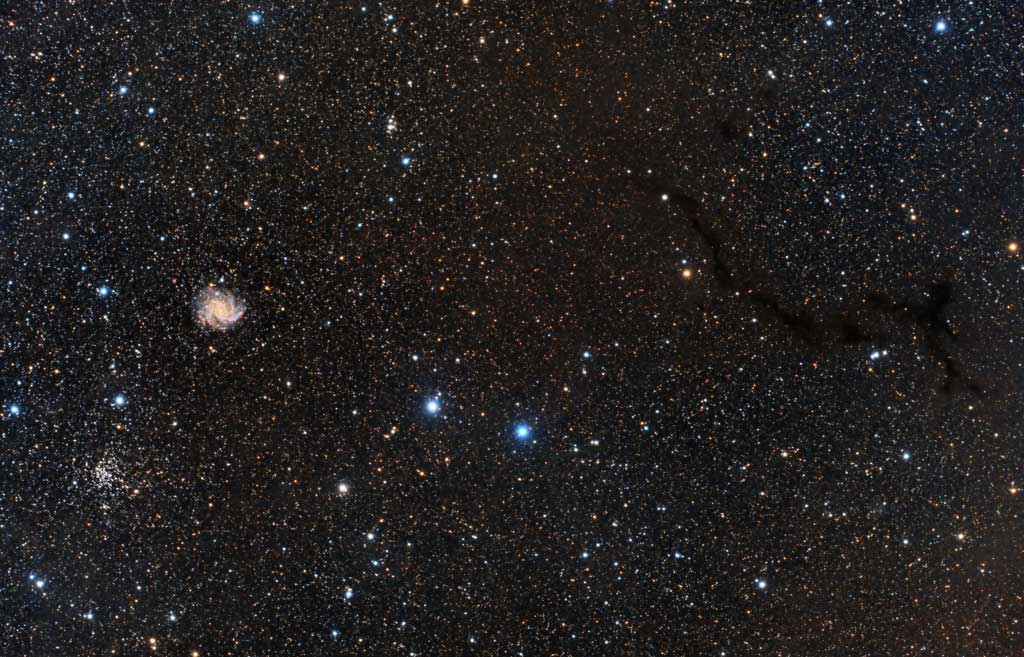
NGC 6946 (Fireworks Galaxy) with Open Cluster NGC6939 and Barnard 150 Dark Nebula Equipment: Astro-Tech at80edt (80mm triplet refractor) Astro-Tech x0.8 flattener/reducer Celestron AVX Nikon d5300 full-spectrum SVBONY 60mm guide scope QHY5-ii-m guide camera IDAS lps d1 48mm (light pollution filter for RGB) Baader 2" 7nm Ha filter Baader 2" 8.5nm Oiii filter Acquisition: Used AstroPhotography Tool to capture ISO 200, focal length 384mm, f/4.8 5 min x 58 (4 hr 50 min) Processing: Mostly used Pixinsight, rarely used Photoshop Taken By : James Lee - Sep 4, 2019
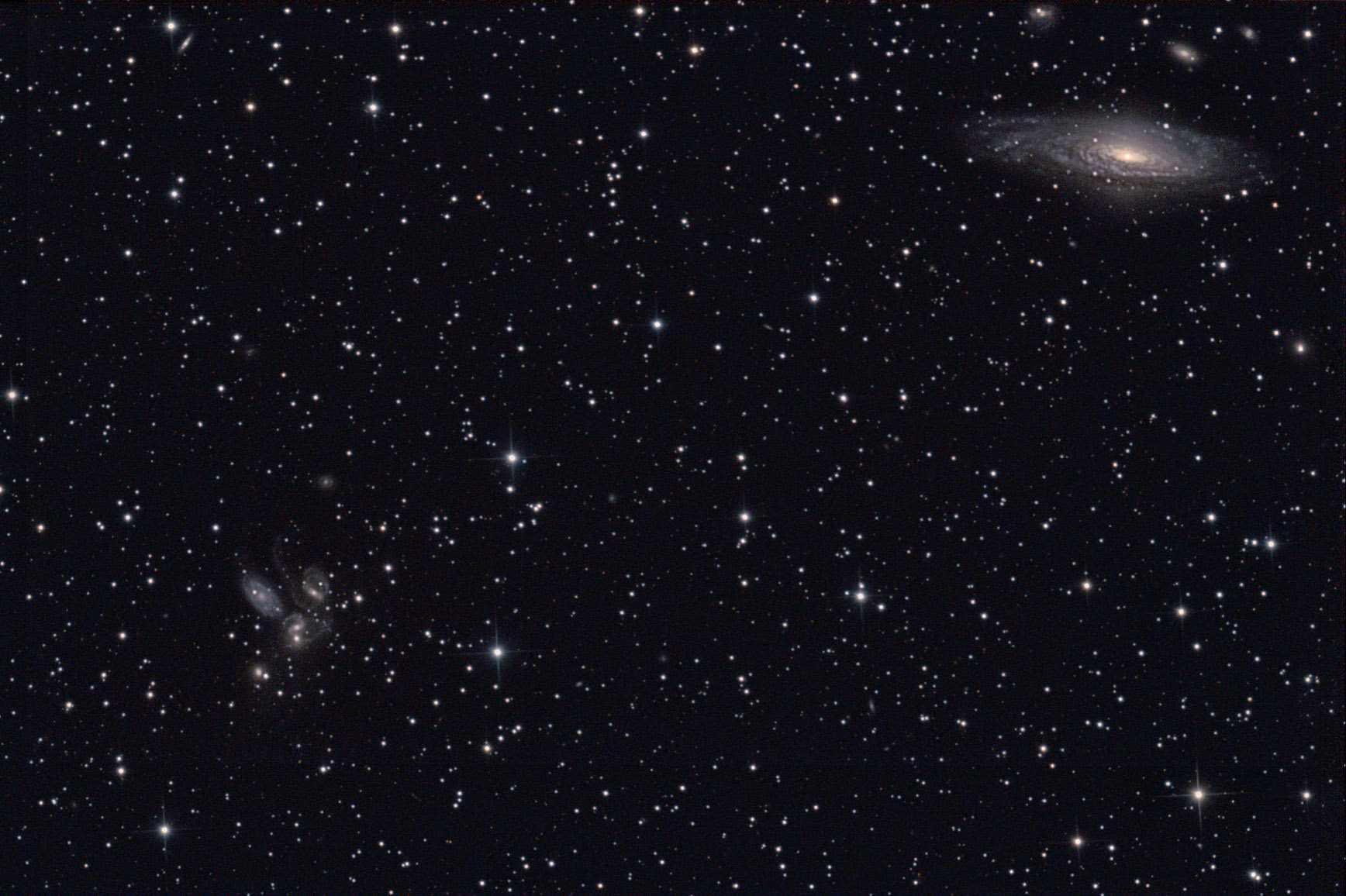
NGC7331_7318
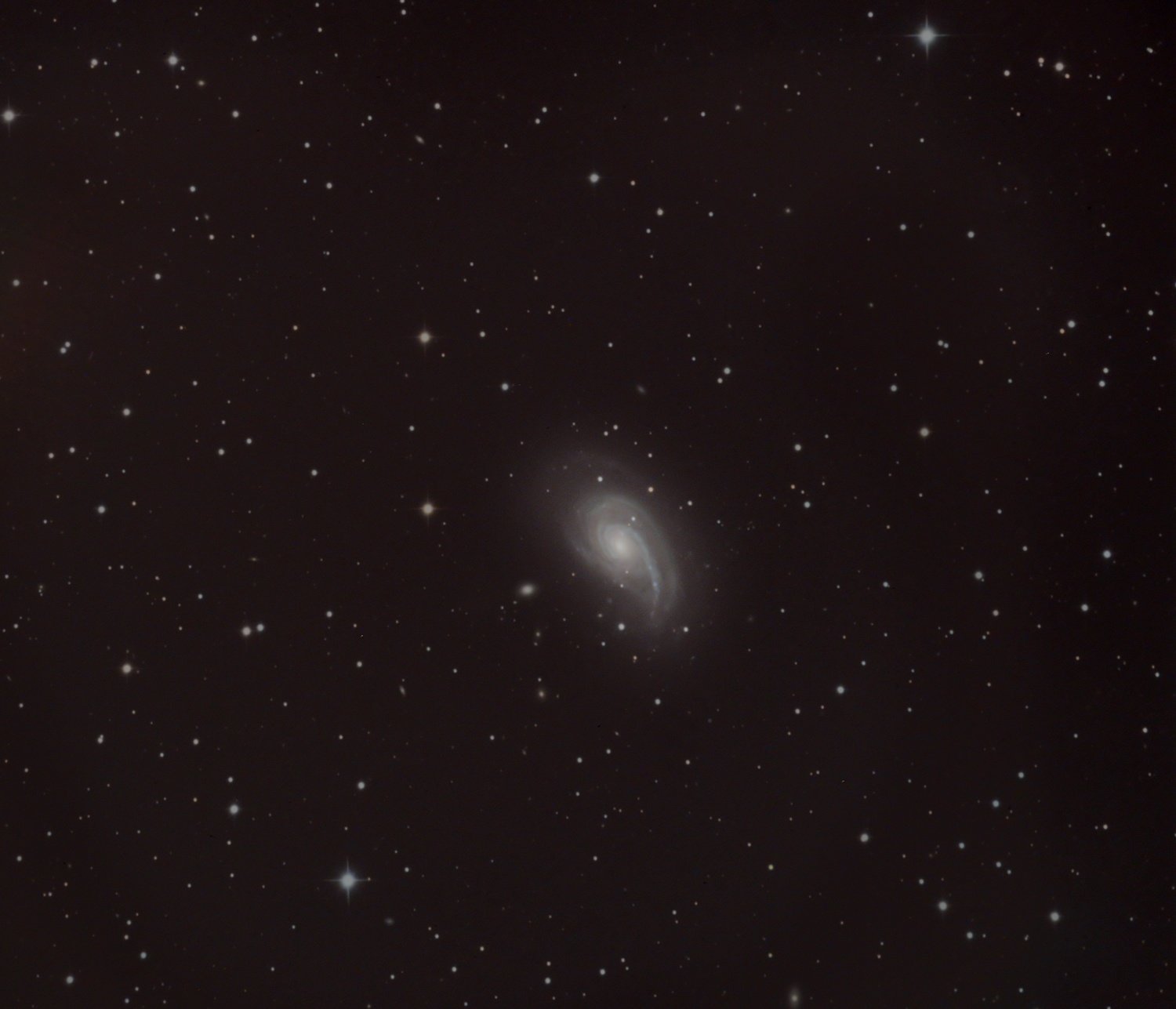
NGC 772 Spiral Galaxy NGC 772 is a spiral galaxy, approximately 130 million light-years away, in the constellation Aries. Below and slightly to the right, is the satellite galaxy NGC 770, which is probably responsible for NGC 772's peculiar shape. Also, there are a lot of dwarf galaxies visible in the immediate neighborhood that may also be interacting with NGC 772. Brian McGaffney - Nutwood Observatory
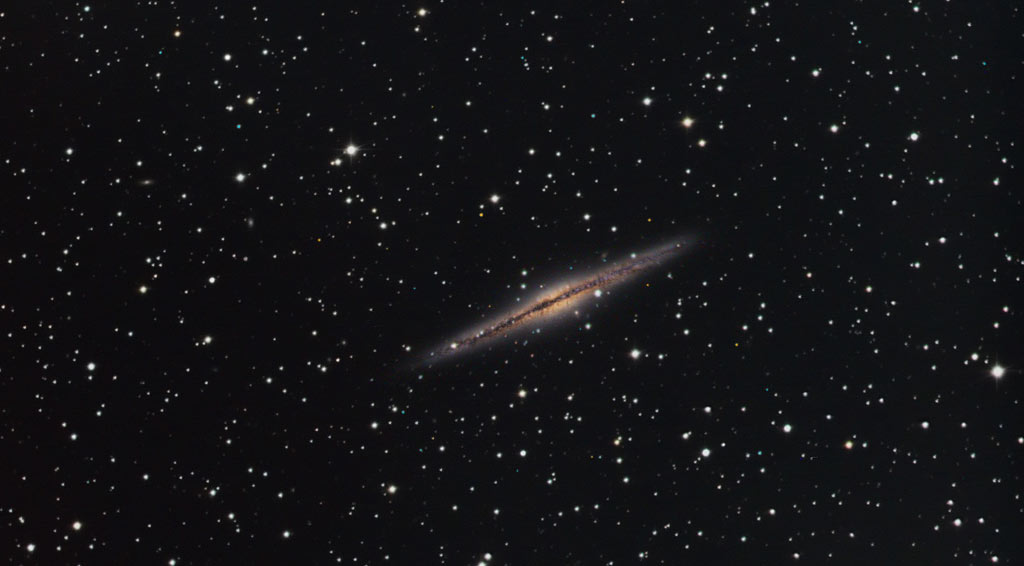
Hi res close up of NGC 891. One can zoom in on NGC 891 and look at some great detail of the edges of the galaxy. Brian McGaffney
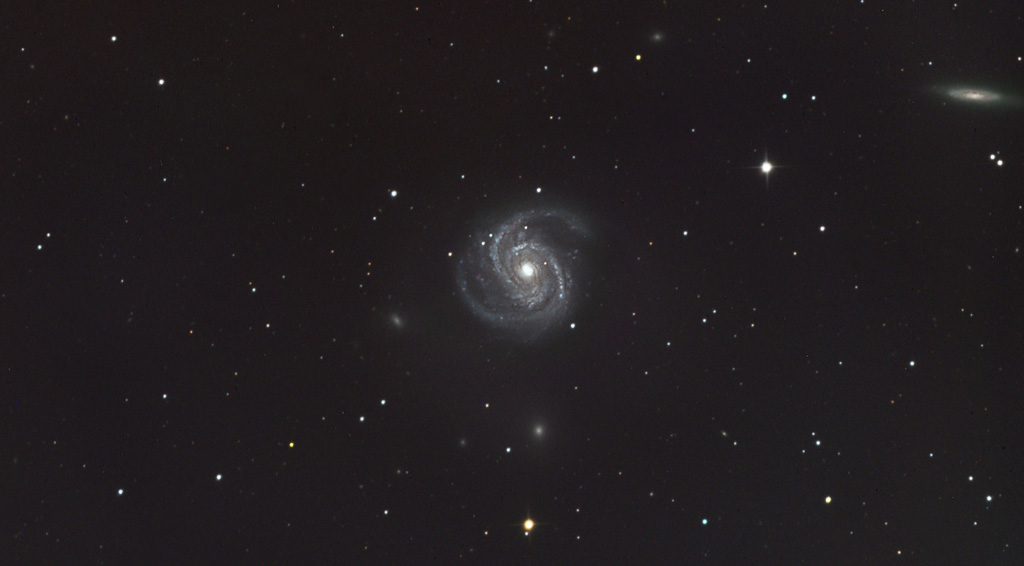
NGC 4321 (M100) is a faint spiral galaxy and is part of the Virgo Cluster located in Coma Berenices. NGC 4321 is around magnitude 10 and distance from earth about 65 million light years. The galaxy is a pure representation of what a spiral galaxy looks like. In the images attached, it shows many of the faint associated galaxy's associated with this object. The fainter object located in the image towards 2 o'clock is another distant spiral, and since in proximity to M100 has some effect on its behaviour. Imaging time for these photos was about 8 hours total taken by myself at the Nutwood Observatory last week. Image was guided and used an Apogee U16M liquid cooled CCD camera with a DK 300 MM Astrograph telescope. Acquistion was done remotely .Processing was done using Pixinsight, MaxIm DLPro and PS Cs5. Imaged by Brian McGaffney